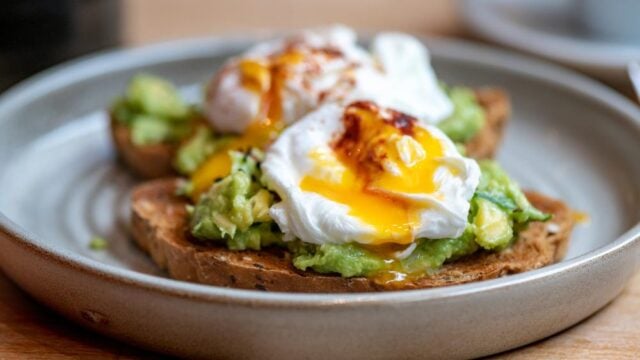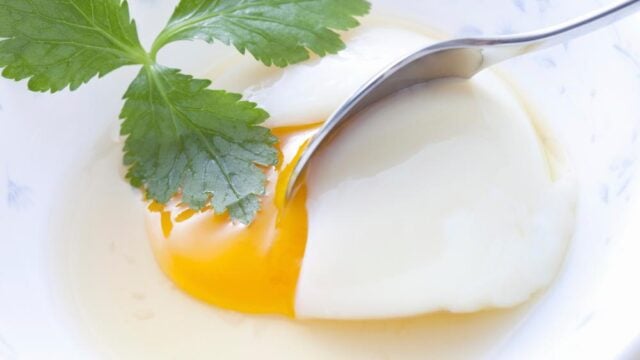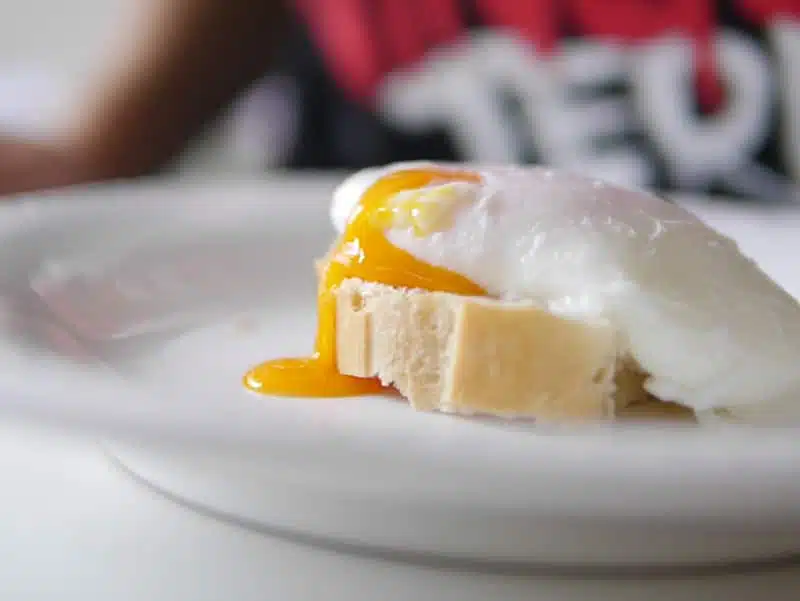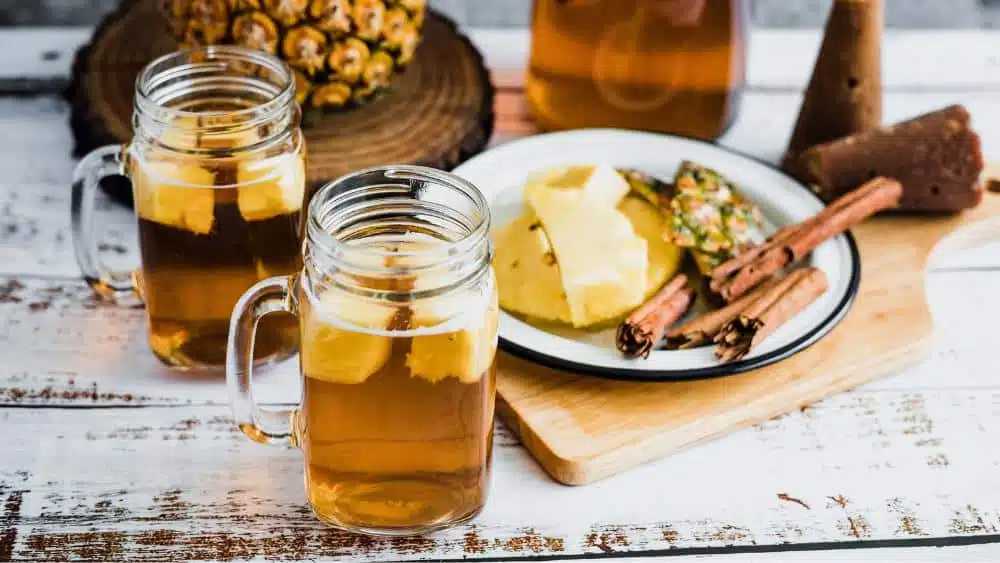Welcome to egg, Paulina!, The series where I make basic recipes with eggs, and today we will learn how to make poché egg or climbing eggs ! How delicious and how difficult are they at the same time, we will not lie, but here we will see how to achieve a performed and delicious consistency.
I remember the first time I looked for how to make Poché egg, it seemed to me that I was seeing a spell more than a basic egg recipe.
Content table
About this Egg Poché recipe
The Egg Poché intimidates, it is so, before trying one, you want to know all the secrets of Egg Poché that can, because that an egg without peel can cook in water certainly challenges the laws of cooking eggs, it is so. Above, to add confusion, half of Hispanic speech countries call them climbed eggs, because ever agree.
Anyway, the classic recipe to make perfect poché eggs is difficult, I will not lie to them, they will waste enough eggs until they get one good, because the practice makes the egg poché. Hax and polish, young Daniel San.
But, here, there is also an easy recipe , because the Internet always has the easy version of things, that is the secret that the CIA does not want you to know. It is a way of making poché eggs with film paper, thus packaging so that you do not make a ball, and the truth is that they work quite well huh.
What is the climbing technique?
Escalfado is a cooking technique that is mainly used to cook eggs. The key to the success in the scalfado is in the ability to break a fresh egg in hot water without the yolk break.
an acidic ingredient in the water, such as vinegar or limo is usually used , which helps to coagulate the clear more quickly and prevents disintegrating during cooking. In addition, water should not boil agitatedly, since the movement could affect the shape of the egg.
This technique, which may seem complex, is actually quite simple. The truth is that with a little practice, anyone can achieve perfect climbing eggs
Other ways to refer to climbing eggs
The scalfed eggs are also known as " Poché eggs " or simply " climbing egg ." In Spanish -speaking countries, especially in Spain, the expression " Poché Egg " is used to refer to this preparation.
It is important to keep in mind that, regardless of the name, the cooking process is the same and the result will be equally exquisite.
Poché Egg cooking time
The cooking time of the climbing eggs can vary according to the freshness of the eggs, the water temperature and the desired cooking point. Generally, they cook between 3 and 4 minutes to obtain a clear well coagulated and a liquid yolk in the center.
For a more cooked yolk, you can leave it up to 5 minutes. To achieve the perfect point, it is advisable to do a single egg test and adjust time according to personal preferences.

5 tips to prepare climbed eggs as a professional
- Vinegar or lemon juice: Add some vinegar or lemon juice to water will help coagulate the fastest clear and prevent them from dispersing in the water.
- Do not break the egg directly in the water: break the fresh egg in a small bowl without damaging the yolk. This facilitates its transfer to hot water.
- Soft swirl: Making a soft swirl before adding the egg helps the white get around the yolk.
- Eye with boiling: It is important that water is not boiling with bolbotones, since the movement could affect the shape of the egg.
- Egg quality: using good quality eggs will guarantee a better result in preparation.
Other climbing egg techniques
- Escalfoado in water with vinegar or lemon juice: this is the most traditional and popular way to make climbing eggs . Water is placed in a pot and a tablespoon of vinegar or lemon juice is added for each liter of water. Vinegar or lemon acid helps coagulate the clear faster.
- Escalfoado in sachets: This technique involves placing the eggs in small plastic bags or rolled on film paper before immersing them in hot water. This facilitates the shape and presentation of the climbing egg , especially when several eggs are prepared at the same time.
- Scholars in molds: In this variant, small individual molds are used to place the eggs before submerging them in hot water. Silicone molds are going very well for this type of preparations, since they maintain the shape of the egg during cooking and allow more elaborate presentations.
- Microwave climb: although less traditional, some chefs opt for Escalfar eggs in the microwave. An egg is broken in a bowl with hot water and cooked in short intervals until it is ready.
- Escalfoado in salt water: instead of using lemon vinegar or juice, some people prefer to add salt to the water to cook the Poché eggs . Salt also helps coagulate the clear faster.
- Escalfado with the help of a strainer: some chefs use a strainer to submerge the egg in hot water and cook it. This helps maintain the shape of the egg and facilitates its water extraction.
What to accompany the climbing eggs
The climbing eggs can be enjoyed alone, with a pinch of salt and pepper, or as a perfect accompaniment for salads, in soups, on a toast, with roasted vegetables or even with meats and fish.
So if you want to know how to make easy climbing eggs , there is that option B, because not everything is frustration in this life and all problems can be solved with film paper.
Before starting : two important details for the moment before throwing the egg in the water:
- The first is that the water is not boiling , or boil ever as the egg is cooking. It has to be about to boil but without breaking boil because if this happens our Poché egg is going to be neglected by the excess of movement that the bubbles general.
- The second is that before throwing the egg into the water, we will introduce a spoon in the pot and we will generate a small swirl inside, which when the egg between, the movement of the water keeps it turning on itself and without separating too much. Once we check these two things, we throw the egg inside the water.
They are not many steps but take into account that the procedure is usually complex. It is likely not to go to the first.
Without more to add, we go to the recipe.

Scavated egg recipe
Ingredients
(Yes, I put them the same ...)
- Egg
- Vinegar
How to make poché egg step by step
Two options:
Option A, the traditional way
- Put a small pot with water and add a splash of vinegar, this will help keep the Egg poché attached.
- Break the egg in a separate bowl, before putting it in the pot.
- Before the water is boiling, introduce a spoon and stir to generate a swirl inside. Then throw the egg inside the water. Cook the Poché Egg Medium or low fire without moving next to the pot to check that the water does not boil or there is not much movement. It is important that everything is not disarmed.
- After 4 minutes, get the Egg Poché with a sparkling and very careful. Ready!
Option B, the easy level that is always gained
- Covering a small container can be a glass, with film paper and above break the egg.
- Grab the ends of the film, join them and tie them forming a pack with the raw egg inside
- Take that package to the pot. (In this case, water may be boiling).
- Cook the package for 4 minutes. And after the time remove it from the water.
- Cut the film paper and detach it from the egg and voila! The same wonderful Poché egg without so much suffering.
And here the video recipe
Below illustrative video. If you want to subscribe to my channel, click here .






Che, vital advice .. place some vinegar into the water, the egg coagulates much better and almost nothing is clear ... it is a way
He hit the Poche egg on the film paper. I don't know what I did wrong. I'm very gross 🙁
Hello Paulina! You would pass punch recipe for Christmas! I saw that there are two versions. One with egg and one with fruits. I would like to know your version!
Always reliable culinary exits in a quite delirious medium !!
I got the first time in the translation way! Genia!
Thank you very much served me a lot and what I study cook! The two came out divine !!!
Do you have instagram! ?? To see more recipes?